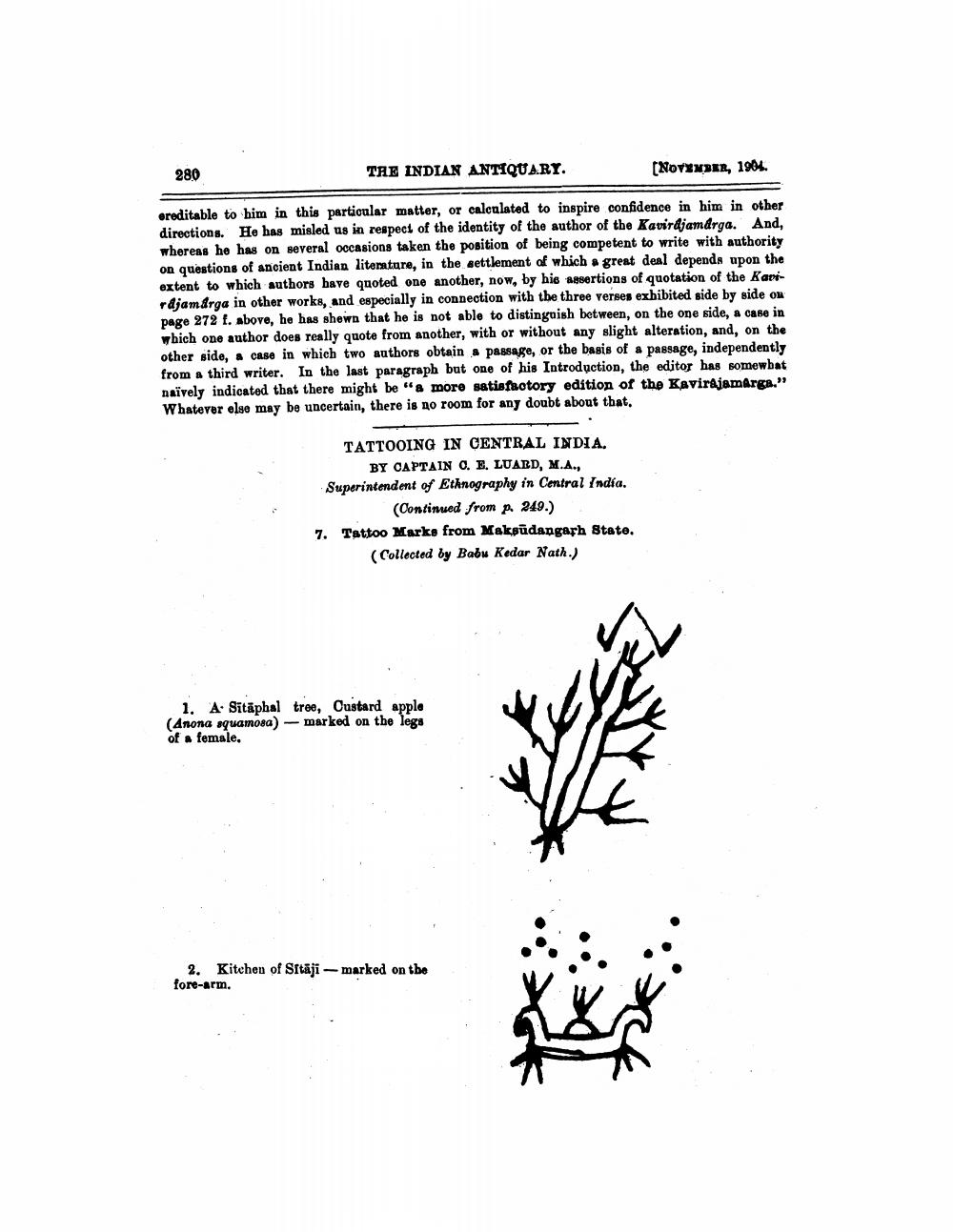________________
280
THE INDIAN ANTIQUARY.
(Novn
, 1964
ereditable to him in this particular matter, or calculated to inspire confidence in him in other directions. He has misled us in respect of the identity of the author of the Kavirdjamdrga. And, whereas he has on several occasions taken the position of being competent to write with authority on questions of ancient Indian literature, in the settlement of which a great deal depends upon the extent to which authors have quoted one another, now, by his assertions of quotation of the Kani rdjamarga in other works, and especially in connection with the three verses exhibited side by side on page 272 f. above, he has shewn that he is not able to distinguish between, on the one side, a case in which one author does really quote from another, with or without any slight alteration, and, on the other side, a case in which two authors obtain passage, or the basis of a passage, independently from a third writer. In the last paragraph but one of his Introduction, the editor has somewbat naïvely indicated that there might be "& more satisfactory edition of the Kavirajamarga." Whatever else may be uncertain, there is no room for any doubt about that.
TATTOOING IN CENTRAL INDIA.
BY CAPTAIN C. E. LUARD, M.A., Superintendent of Ethnography in Central India.
(Continued from p. 249.) 7. Tattoo Marks from Maksüdangarh Stato.
(Collected by Babu Kedar Nath.)
1. A. Sītāphal tree, Custard apple (Anona squamosa) - marked on the legs of a female,
2. Kitchen of Sftāji - marked on the fore-arm.
Te..




